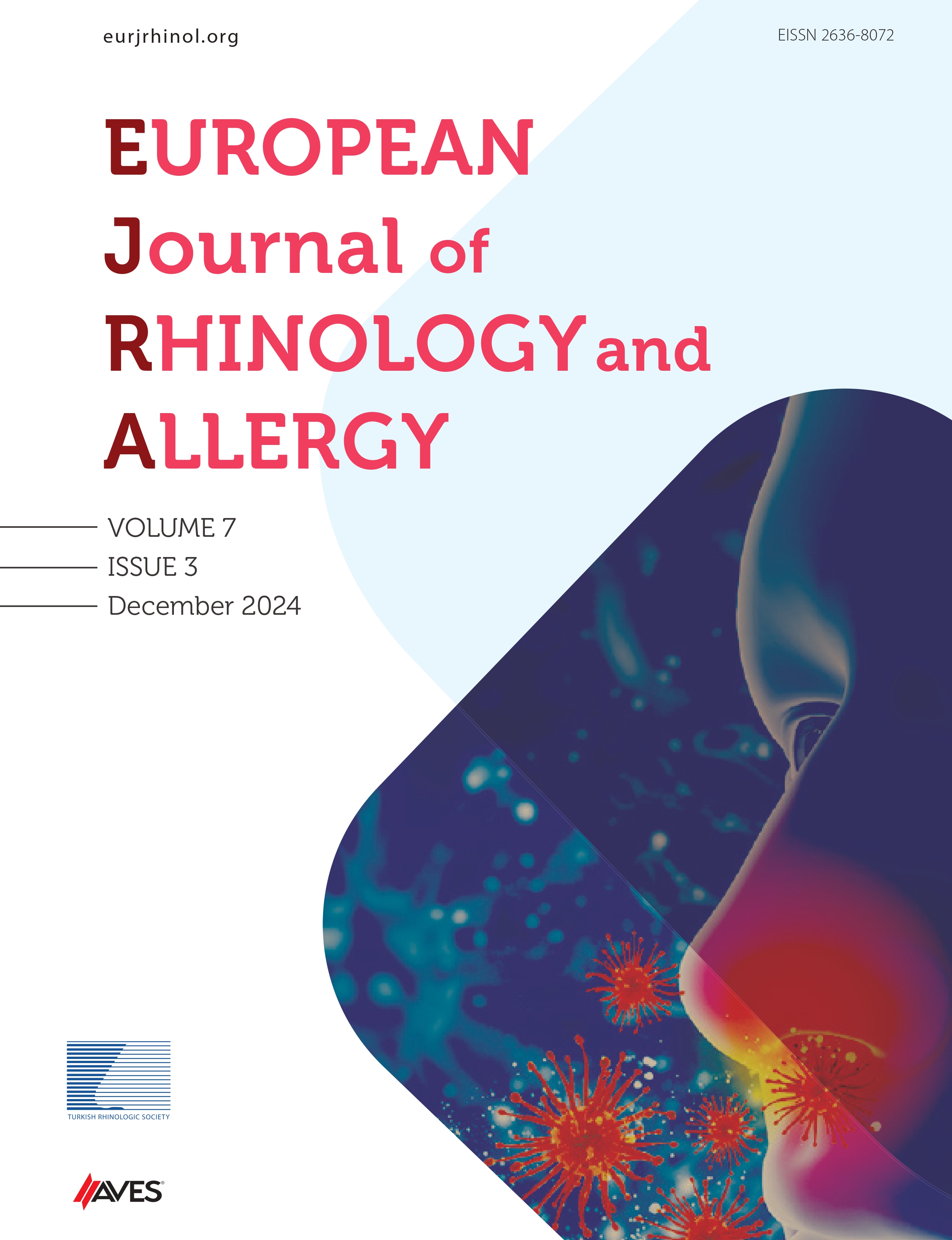Objective: While researchers have posited various factors, the precise etiology of anosmia in coronavirus disease 2019 (COVID-19) patients remains elusive. We aimed to investigate the relationship between the status of the nasal olfactory mucosal area and medical and demographic variables in patients with COVID-19-related olfactory dysfunction.
Methods: In a retrospective analysis, we scrutinized data from 65 adult COVID-19 patients who exhibited olfactory impairment, excluding those with specific medical histories or age-related criteria. Our assessment comprised the analysis of paranasal sinus computed tomography scans to assess inflammation within the nasal olfactory mucosa. Olfactory testing was not employed in this study. We conducted a comprehensive investigation to explore potential associations with gender, age, septal deviation status, taste disorders, and the timing of the onset of olfactory dysfunction.
Results: The average age of the patients was 31.6 ± 12.4 years, with 18 (27.7%) male and 47 (72.3%) female patients. Of 65 patients, 43 (66.2%) reported olfactory dysfunction simultaneously with COVID-19, while 22 (33.8%) experienced it after testing positive. Taste abnormalities were present in 49 patients (75.4%). Thirty-seven patients (56.9%) had a nasal septum deviation. Inflammation in the olfactory mucosal region was found in 8 patients (12.3%). The study did not find any significant association between inflammation in the olfactory mucosa and factors like age, gender, taste disorders, or the type of olfactory dysfunction. Still, a significant correlation was found between inflammation in the olfactory mucosal region and nasal septal deviation (P=.009).
Conclusion: In COVID-19 patients with olfactory dysfunction, nasal septal deviation was the most common accompanying factor with olfactory mucosal area inflammation, suggesting it may be a potential risk factor
Cite this article as: Aksoy A, Çırakoğlu MF, Bingöl F, Özel Bingöl B. Evaluation of the nasal olfactory mucosal area in patients affected by olfactory dysfunction associated with coronavirus disease 2019. Eur J Rhinol Allergy 2023;6(3):72-75.

.png)

.png)